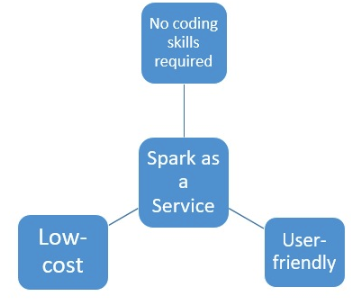Apache Spark as a Service
What is Apache Spark as a Service?
Apache Spark is an open source cluster computing framework for fast real-time large-scale data processing. Since its inception in 2009 at UC Berkeley’s AMPLab, Spark has seen major growth. It is currently rated as the largest open source communities in big data and it features over 200 contributors from more than 50 organizations. Databricks hosts its optimized version of Apache Spark as Spark-as-a-Service in multiple clouds. It comes with a set of built-in applications that can help you access and analyze data faster. It leverages Spark’s numerous capabilities of operating on Big Data like its capability of working with streaming data, performing graph computation, offering SQL on Hadoop as well as its machine learning functionality. Even though most organizations have recognized the opportunities that Spark offers, many still struggling. Why? Because of the challenges organizations are facing when trying to analyze data streams or large amounts of data. However, this does not mean that you can’t take advantage of the benefits that Spark brings without the hardware investments and full-scale adoption and implementation. Spark as a Service eliminates the infrastructure challenges and speeds up the process by knocking out most of the costs and effort required. There are already several providers that offer Spark as a Service making this framework easy and fast to deploy. This solution works great for short-term data analytics projects that can be set up quickly with a high return on investment. Spark as a Service makes it easy to process and query data stored in Hive, HDFS, HBase and Amazon S3. While Spark as a Service is probably the best choice if you have a temporary analytics project. It also proved to the preferred option for companies looking to see the upsides of using big data and analytics before making large investments in their own big data processing system.
Main Advantages of Using Spark as a Service:

- An easy way to access Spark data
- No specialized coding skills required; as a result, it can be easily used by both technical and business users
- lower costs
